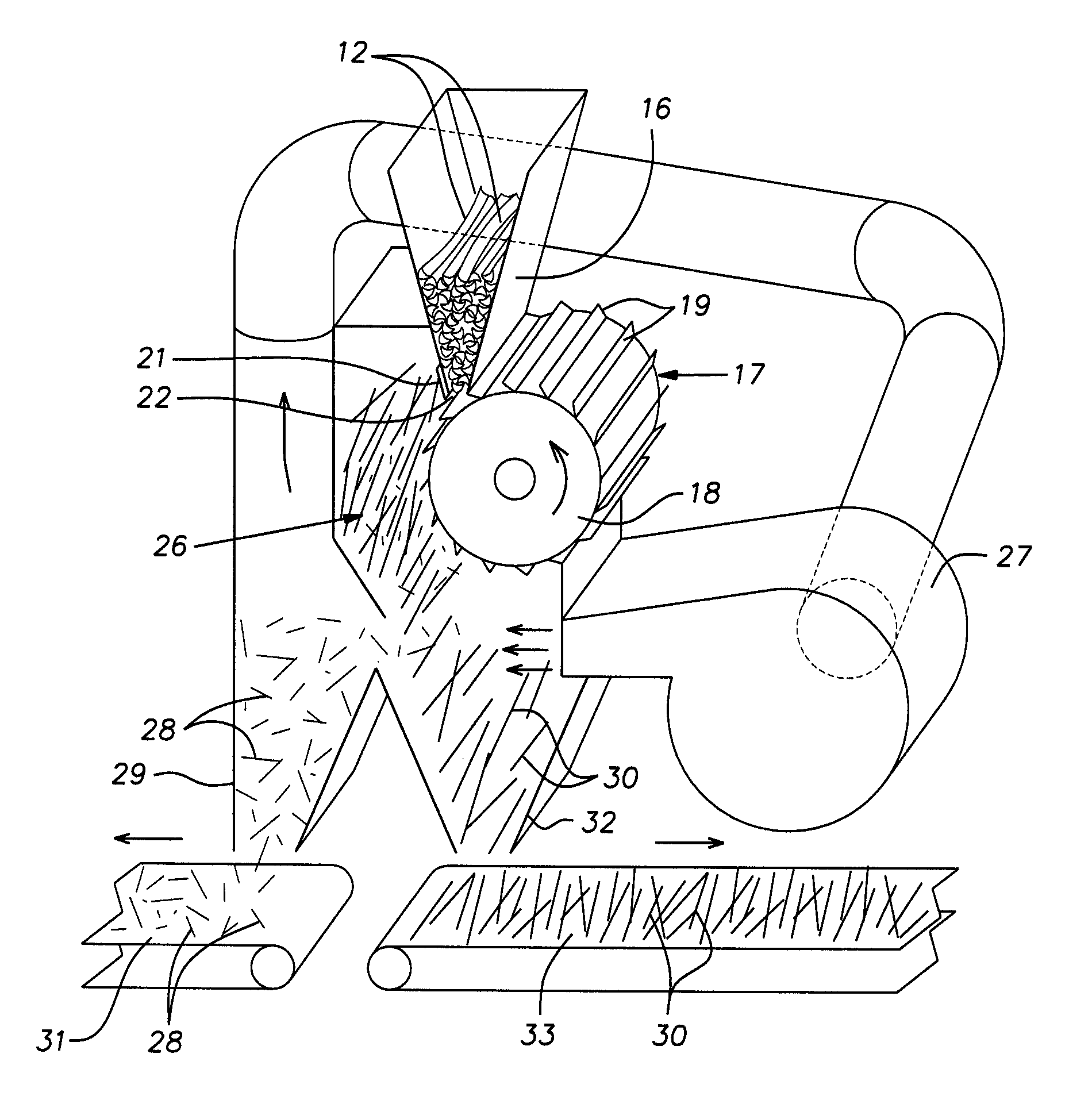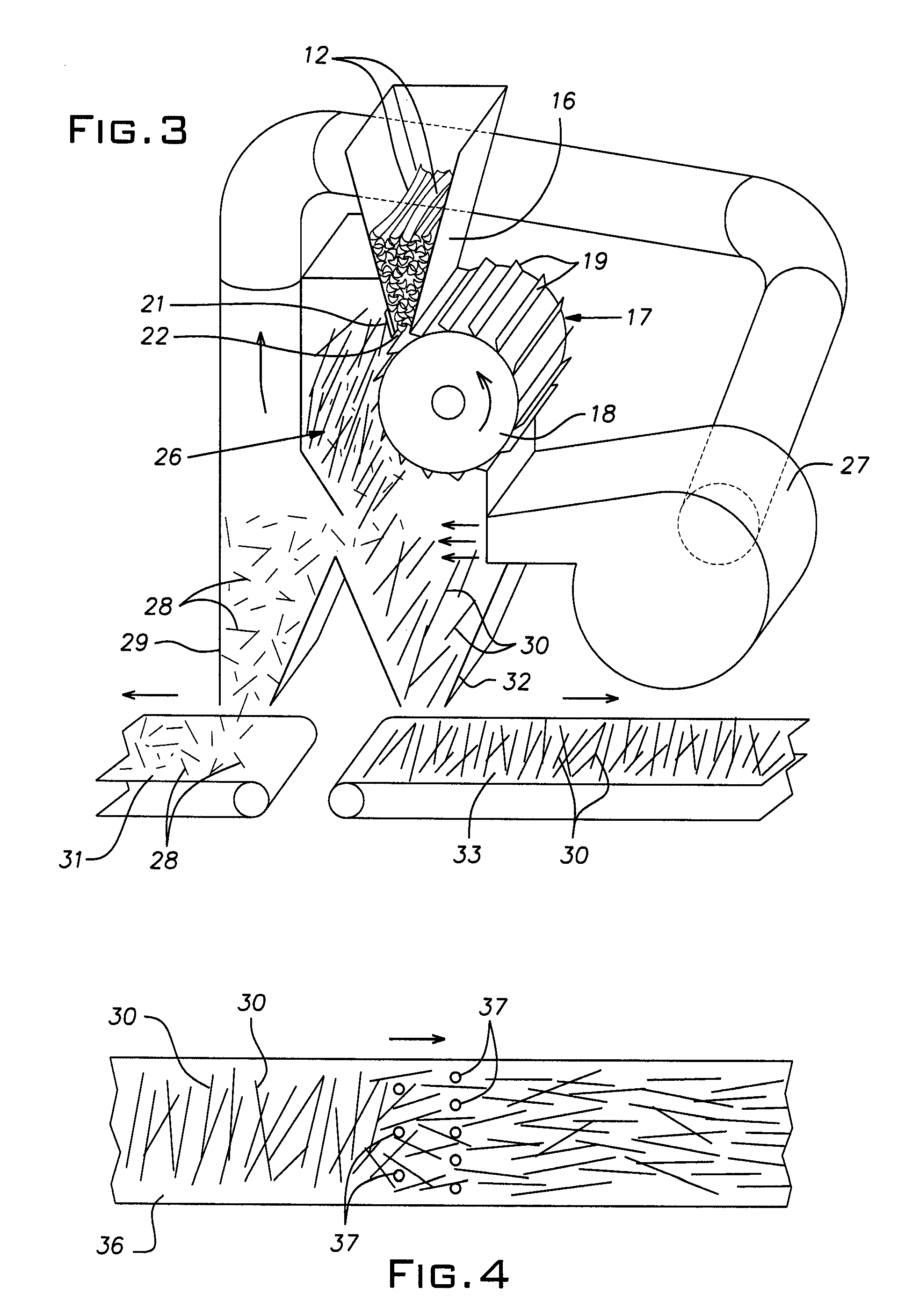Chipboard
a chipboard and structural board technology, applied in the field of chipboard, can solve the problems of largely going to waste and the liability of growers, and achieve the effects of low cost, high yield of stranded shell material, and high tensile strength
- Summary
- Abstract
- Description
- Claims
- Application Information
AI Technical Summary
Benefits of technology
Problems solved by technology
Method used
Image
Examples
Embodiment Construction
[0014]FIG. 1 is a drawing of an oil palm tree 10 originally indigenous to Africa and now commercially grown in various equatorial territories. The fruit of the oil palm is harvested for its oil frequently on a very large scale for food and chemical applications. To pick the fruit, a worker, typically using a machete, hacks off the fronds enveloping it from below. The truncated fronds 11, on the lower part of the tree shown in FIG. 1, are the result of this practice. A cut length 12 of a frond is illustrated in FIG. 2. On average, the frond section produced during a fruit harvest can have a woody length of about 2 or 3 feet, i.e. about ½ meter, although this length can obviously vary considerably.
[0015]The frond section or length 12 will characteristically have a modest bow or large radius of curvature and will typically be V-shaped in cross-section. Moreover, the frond length 12 has a relative hard and dense shell indicated generally at 13 associated with its exterior surfaces and a...
PUM
 Login to View More
Login to View More Abstract
Description
Claims
Application Information
 Login to View More
Login to View More - R&D
- Intellectual Property
- Life Sciences
- Materials
- Tech Scout
- Unparalleled Data Quality
- Higher Quality Content
- 60% Fewer Hallucinations
Browse by: Latest US Patents, China's latest patents, Technical Efficacy Thesaurus, Application Domain, Technology Topic, Popular Technical Reports.
© 2025 PatSnap. All rights reserved.Legal|Privacy policy|Modern Slavery Act Transparency Statement|Sitemap|About US| Contact US: help@patsnap.com



